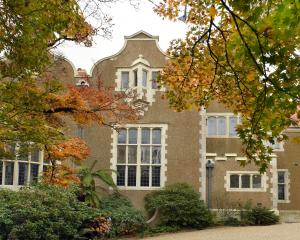 Bob Kilgour at a family gathering at his and wife Esme’s home. PHOTOS: SUPPLIED
Bob Kilgour, Photographer, businessman
Bob Kilgour at a family gathering at his and wife Esme’s home. PHOTOS: SUPPLIED
Bob Kilgour, Photographer, businessman

Bob Kilgour was a man never short of an idea.
The Alexandra goldminer, businessman and heritage advocate was passionate about the people, nature and history of Central Otago.
Born to William and Rosena Kilgour in Dunedin in 1942, Robert William Kilgour grew up in Cromwell. He was educated at Cromwell District High School with siblings Elaine and Ian.
A keen photographer during his schooling, Bob continued this part-time after graduating, while working in orchards clearing water races.
He was soon offered a photographer’s job at the Otago Daily Times in Dunedin, where on his first day, he was tasked with photographing the office of a solicitor killed by a parcel bomb.
Bob took a photograph of the Queen Mother flyfishing at Lake Hawea which was published around the world.
While he enjoyed his time at the ODT, Bob decided to return to Central Otago where he entered into a partnership with Gourley’s Photography.

After the advent of colour photography, they eventually sold the business to a Christchurch laboratory.
Bob then established his own general photography and picture framing business which he sold after 15 years.
He married Esme in 1970, and the couple welcomed their daughter Victoria in 1973 and son John in 1975.
Gold mining was in Bob’s genes.
His grandfather worked the Victorian goldfields, in Australia, before immigrating to New Zealand. Bob’s father mined near the Kawarau River at Scotland Point, where Bob began his own mining career.
He mined in more than 20 areas across the length and breadth of Central Otago, from the Buster Diggings on the Hawkdun Ranges to the Nevis.
Geologist John Youngson recalled Bob as a resourceful and shrewd miner.
"Bob knew a good opportunity when he saw one, and drove a hard bargain to get it," Mr Youngson said.
Moreover, Bob was generous with his knowledge and time — "he always had a soft spot for the underdog".
He kept thorough samples from test sites across the district, many of which were donated to Central Stories Museum.
Some samples even became evidence and were used by police to cross-check the origin of stolen gold.
Bob was community-minded and passionate about Central Otago — its people, history and nature.
While Bob was president, the Flood Action Group, along with the Central Otago District Council, were successful in getting Contact to dredge the Manuherikia River every two years to prevent future flooding.
He was a founding member of the Aero Club and the first person to achieve his pilot’s licence through the club.
Conserving the heritage of the area was important for Bob, and he was involved in rescuing a dredge from the Manuherikia River — now displayed on the Otago Central Rail Trail, near Chatto Creek.
He was part of the group which saved the facade on Alexandra’s BNZ bank.
Alongside Jim McLean and Russell Ibbotson, he developed Molyneux Estate and Molyneux Industrial Park and was instrumental in getting a second supermarket established in Alexandra.
Retirement was never on the cards for Bob.
Esme said he had never planned to step back.
"Being married to Bob was a bit of a rollercoaster ride in some ways. He never ever planned any retirement."
Bob was diagnosed with dementia about three years ago — a massive blow to a fiercely independent person, Esme said.
He died in Dunedin Hospital on June 6, aged 82, after a fall in Alexandra.
He is survived by Esme, Victoria and husband Simon, John and grandchildren Ben, Rose, Jasper, Lucus and Isla.
— Ruby Shaw












